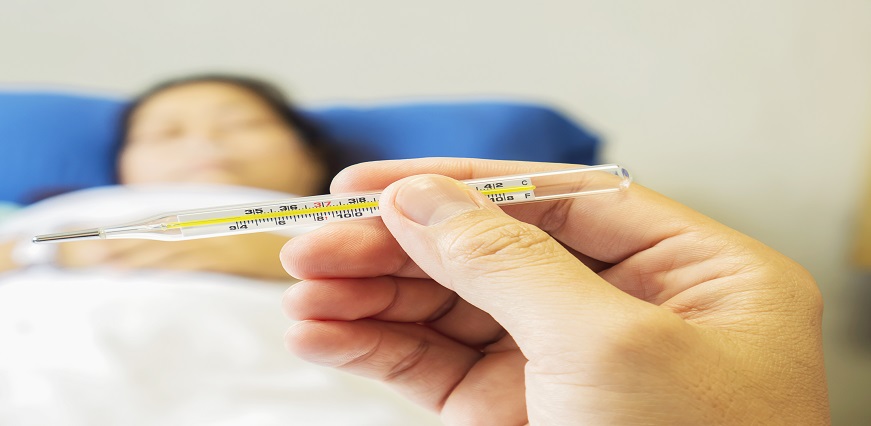


Max Lab
Jun 06, 2023
Have you ever heard of an ANA test? It's a simple blood test that can help diagnose autoimmune diseases. But what exactly is it, and when do you need one? In this article, we'll dive deep into the world of ANA tests - who should get tested, how to prepare for the test, and what the results mean. Whether you're experiencing symptoms or simply curious about this type of testing, read on to learn all about ANA tests!
An ANA test, short for antinuclear antibody test, is a blood test that detects the presence of autoantibodies in your bloodstream. Autoantibodies are proteins produced by your immune system that attack your own healthy cells and tissues by mistake.
An ANA test is usually ordered to help diagnose autoimmune diseases. Symptoms that may prompt your doctor to order this test include joint pain, rash, fatigue, and fever which cannot be explained by other medical conditions. Additionally, if you have a family history of autoimmune disorders or if you are experiencing unexplained symptoms related to the immune system, your doctor may suggest getting tested.
The ANA test can also be used as a follow-up for individuals who have already been diagnosed with an autoimmune disease like lupus or rheumatoid arthritis. The results from these follow-up tests can help doctors monitor disease activity and treatment effectiveness.
It's important to note that having a positive ANA test does not necessarily mean that you have an autoimmune disease. Positive results can occur in healthy individuals without any symptoms of illness as well as those with non-autoimmune-related conditions.
Who should get tested for an ANA test? This is a common question among those who may be experiencing symptoms that could indicate an autoimmune disorder. The ANA test is typically ordered by a healthcare provider when there is suspicion of lupus, rheumatoid arthritis, or other autoimmune disorders.
Individuals with family members who have been diagnosed with these conditions are also encouraged to get screened for the presence of autoantibodies in their blood. Women and people over 50 years old are more likely to develop these types of disorders, so they may also want to consider getting tested.
Additionally, individuals who exhibit certain symptoms such as joint pain and inflammation, fatigue, fever or skin rashes should speak to their healthcare provider about whether an ANA test would be appropriate.
Before an ANA test, it's important to prepare properly to ensure accurate results. First and foremost, it's essential that you inform your doctor of any medications or supplements you may be taking as certain drugs can affect the accuracy of the test.
In addition, it's advisable to fast for a few hours before the test is done. This means refraining from eating or drinking anything apart from water during this period. It helps in avoiding food and drink substances interfering with the blood sample taken.
It's also recommended that you wear clothing that allows easy access to your arm as this is where the blood sample will be drawn from. If possible, try not to wear tight-fitting clothes around your arm area on the day of testing.
The ANA test is a blood-based test that can determine the presence of antinuclear antibodies in your bloodstream. This test is commonly used to diagnose autoimmune diseases such as lupus and rheumatoid arthritis. However, one important aspect of this test that many people are curious about is how long it takes to complete.
In general, an ANA test doesn't take very long to perform. The actual blood draw process usually only takes a few minutes, and there are no specific preparations required beforehand.
Once your blood sample has been drawn, it will be sent off to a laboratory for analysis. Depending on where you live and which lab your doctor uses, the time required for this analysis can vary. In some cases, results may be available within a day or two of the blood draw.
The ANA test results are reported as titers, which is a measure of the amount of antibodies present in the blood. A titer of 1:40 or higher is considered positive for ANA, while lower titers may be considered negative.
It is important to note that a positive result does not necessarily mean that you have an autoimmune disease. Many healthy people can have low-level positive results on their ANA test without any symptoms or medical issues.
Furthermore, even if your ANA test comes back positive, it doesn't necessarily indicate what type of autoimmune condition you may have. Additional testing and evaluations by your healthcare provider will be needed to determine the underlying cause of your symptoms.
It's also important to understand that some medications and infections can lead to false-positive results on the ANA test. Therefore, it's essential to provide your doctor with detailed information about any medications you're taking or illnesses you've experienced before undergoing the test.
In wrapping up this article, it is important to note that the ANA test is a valuable tool in diagnosing autoimmune diseases. It can provide important information to healthcare providers about the presence of autoantibodies in your blood.
If you are experiencing symptoms such as joint pain, fatigue, or rashes and suspect an autoimmune disease may be the cause, speak with your doctor about getting an ANA test.






Comments